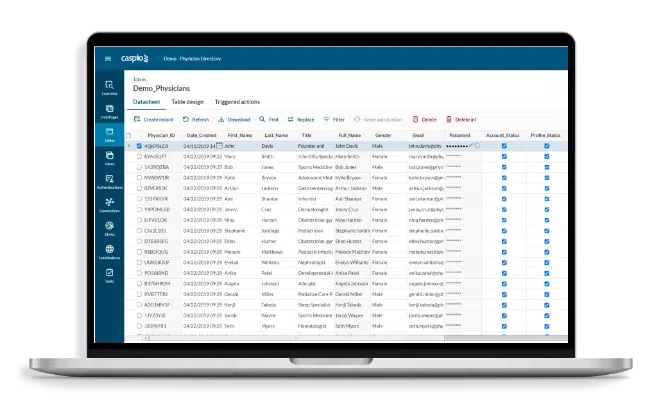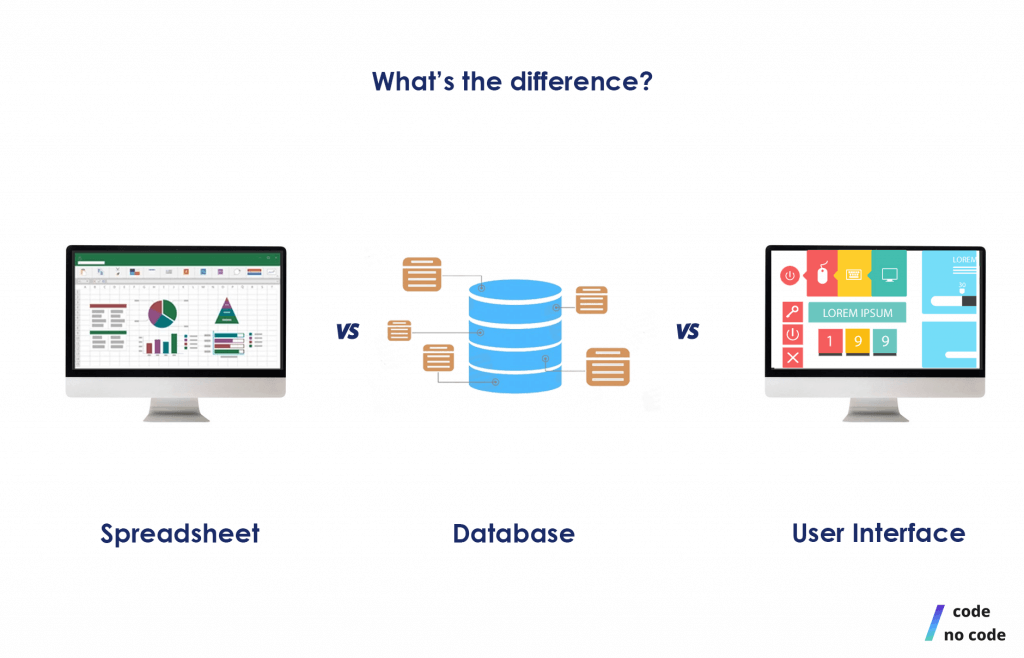Why No-Code is the Future of Open System Data Source Development for Companies
Why No-Code is the Future of Open System Data Source Development for Companies
Blog Article
Exploring the Benefits of Scalable Data Sources That Require No Coding Skills for Reliable Data Monitoring Solutions
The introduction of scalable databases that eliminate the requirement for coding abilities offers a transformative opportunity for companies seeking effective data monitoring remedies. By enabling non-technical users to harness the power of data with user-friendly user interfaces, these systems enhance accessibility and foster cooperation across diverse teams. Furthermore, their cost-effectiveness and flexibility to evolving organization requirements can considerably improve operational processes. As we take into consideration the ramifications of such developments, it ends up being vital to check out exactly how they can reshape the landscape of information monitoring and drive sustainable growth in a competitive setting.
Enhanced Availability for Customers
Enhanced availability for users is an important aspect of scalable databases, making certain that data monitoring systems are intuitive and easy to use. In an era where data-driven decisions are paramount, ease of access allows a bigger series of individuals, including those without considerable technological expertise, to involve with database systems efficiently. This democratization of information gain access to assists in enhanced collaboration throughout departments, empowering employees to remove understandings and make educated choices.
Easy to use interfaces, such as drag-and-drop functions and aesthetic information representation, simplify complex data communications. These enhancements decrease the understanding contour related to traditional data source management, allowing customers to focus on leveraging information as opposed to facing technological intricacies. Scalable databases often incorporate personalized dashboards and real-time analytics, giving users with immediate understandings tailored to their details needs.

Cost-Effectiveness and Resource Savings
Effective data management not only rests on availability yet additionally on cost-effectiveness and resource financial savings. Scalable databases developed for users without coding abilities significantly minimize monetary worries normally associated with conventional data source monitoring systems. By getting rid of the demand for specialized programs expertise, organizations can allocate their resources much more effectively, concentrating funds on core organization tasks as opposed to considerable training or hiring skilled workers.
In addition, these data sources usually use cloud-based options, which better lower costs related to equipment and maintenance. Organizations can scale their data source solutions according to their demands, staying clear of the expenses sustained from over-provisioning sources. This versatility indicates organizations can adapt to changing needs without sustaining unnecessary prices, causing considerable lasting cost savings.
In addition, straightforward interfaces improve data entrance and monitoring procedures, minimizing the moment spent on administrative jobs. This efficiency converts into labor price financial savings, allowing groups to concentrate on calculated initiatives rather than regular maintenance. Overall, taking on scalable data sources that need no coding skills fosters a more affordable technique to information monitoring, allowing organizations to maximize their resources while preserving high levels of functional effectiveness.
Improved Collaboration Across Teams

In addition, scalable databases assist in seamless communication amongst group members. With straightforward interfaces that call for no coding abilities, employees can quickly develop, modify, and share reports or control panels customized to their particular needs. This democratization of data empowers non-technical users to contribute insights, boosting the collaborative environment.
Furthermore, these databases sustain concurrent gain access to, permitting numerous users to deal with the very same dataset simultaneously. This attribute improves productivity, as teams can engage in joint information evaluation without the danger of variation control problems. The capability to leave notes or comments straight within the data source further promotes dialogue and clears up data interpretations.
Streamlined Information Management Processes
In today's data-driven you could try these out setting, organizations acknowledge the need of streamlined data monitoring processes to make the most of performance and accuracy. By leveraging scalable databases that require no coding abilities, organizations can streamline their data handling and decrease the intricacies commonly connected with typical data source systems. This access equips non-technical customers to look these up engage directly with information, promoting quicker decision-making and decreasing dependence on specialized IT employees.
Streamlined information management processes enhance workflow by automating regular tasks such as data entrance, validation, and reporting. Automated data combination ensures that info from numerous resources is accumulated effortlessly, eliminating silos and fostering a linked sight of crucial business metrics (no-code). Straightforward interfaces enable employees to control information easily, enabling them to create insights that drive calculated initiatives without the requirement for considerable training.
This efficiency not just increases operational procedures yet also lessens the possibility for human error, guaranteeing that information continues to be dependable and precise. Inevitably, streamlined data administration procedures via scalable databases result in improved efficiency, permitting companies to focus on core activities while guaranteeing that their information monitoring techniques are efficient and efficient.
Scalability for Expanding Companies

For increasing business, the capability to scale up or down is crucial. A scalable database can handle an increase of information produced from new consumers, items, or services, ensuring that business procedures stay continuous. Moreover, these data sources supply the capability to take care of peak lots effectively, which is important throughout periods of rapid development or seasonal spikes.
Additionally, several scalable data source services are made with easy to use user interfaces that need no coding abilities, empowering non-technical personnel to manage information efficiently (no-code). This democratization of data management permits organizations to allot resources purposefully and decrease dependence on specialized IT personnel
Eventually, adopting a scalable database not just enhances functional performance however additionally fosters a setting where companies can develop and introduce without the constraints of standard data source systems. This adaptability settings companies for lasting success in today's competitive landscape.
Final Thought
In final thought, scalable data sources that need no coding skills offer considerable advantages for efficient data management. By streamlining information monitoring procedures and offering scalability for expanding organizations, such remedies make it possible for organizations to adjust to transforming demands efficiently.
Enhanced accessibility for users is a crucial aspect of scalable databases, guaranteeing that information monitoring systems are instinctive and straightforward.User-friendly user interfaces, such as drag-and-drop attributes and visual data depiction, simplify complex information interactions. On the whole, taking on scalable databases that require no coding abilities fosters a more economical technique to information management, making it possible for organizations to maximize their sources while keeping high degrees of functional efficiency.
By leveraging scalable data sources that require no coding abilities, companies can simplify their data handling and reduce the complexities usually connected with typical database systems - no-code.Structured data monitoring processes enhance operations by automating routine tasks such as information entry, recognition, and reporting
Report this page